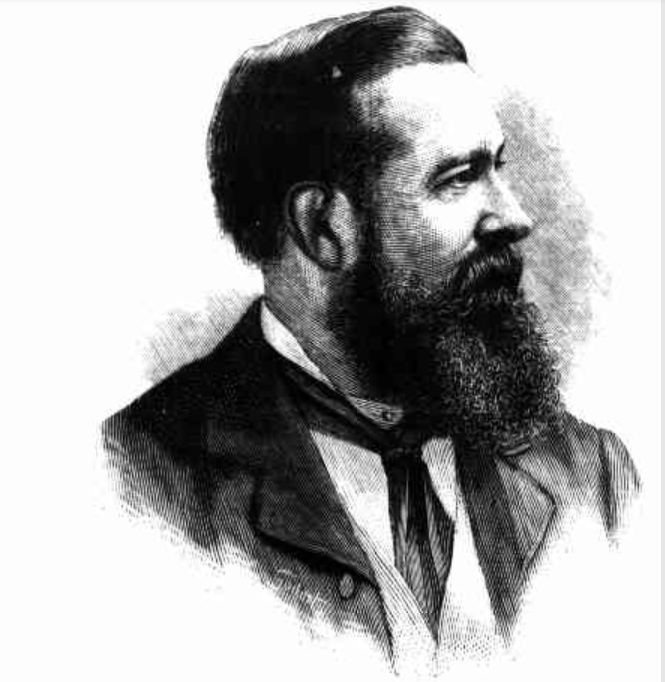Home » Posts tagged 'history'
Tag Archives: history
Lady Lucy Forrest Darley (1839-1913), social position, charity and a glass of champagne
Lady Lucy Forrest Darley nee Brown(e) (1839-1913)[1] was born in Melbourne, the sixth daughter of Sylvester John Brown(e) (1791-1864) and Eliza Angell Alexander (1803-1889). On 13 December 1860, she was married in London to Frederick Matthew Darley, the eldest son of Henry Darley of Wingfield, Wicklow, Ireland.[2]
On 18 January 1862, she and her husband and a servant left Plymouth on the Swiftsure and arrived in Hobson’s Bay (Melbourne) on 19 April 1862. Six weeks later, on 1 June 1862, Frederick was admitted to the New South Wales bar on the nomination of John Plunkett QC.[3]
Lucy was to have six daughters and two sons. Henry Sylvester (1864-1917), Olivia Lucy Annette (1865-1951), Corientia Louise Alice (1865-1951), Lillian Constance (1867-1889), unnamed female (1868-1868), Cecil Bertram (1871-1956), Lucy Katherine (1872-1930) and Frederica Sylvia Kilgour (1876-1958). She sadly experienced the loss of one daughter at birth in 1868 and another daughter, Lillian, died from typhoid in 1889 when she was 22 years old.[4]
Lady Darley was active in charitable and philanthropic work and was a founder of the Fresh Air League, and one of the first members and the first president of the District Nursing Association. She also helped to form the Ministering Children’s League in Sydney, was keenly interested in the School of Industry, the Mothers Union, the Queen’s Fund as well President of the Working and Factory Girls Club and of the ladies committee of the Boys Brigade.[5]
She had gone to live with her husband in London in 1909 and died there in 1913. Her obituary in the Sydney Morning Herald noted that, during the time Sir Frederick Darley was Lieutenant Governor of New South Wales (NSW), Lady Darley gave her hearty sympathy and support to many charitable and philanthropic objects.[6] One might gain the impression from this statement that her charitable and philanthropic efforts were coincident with her husband occupying the role of Lieutenant Governor of NSW. In other words, it could be suggested that her involvement and philanthropic interest arose largely from her social obligations as the wife of the Lieutenant Governor. Was this a fair summary of Lady Darley’s charitable efforts?
(more…)William Ansdell Leech (1842-1895) and the Fresh Air League
On 25 September 1890,[1] in his parish of Bong Bong in the Southern Highlands of NSW, the Rev William Ansdell Leech, an Anglican clergyman, formed a Ministering Children’s League (MCL) group from which the NSW Fresh Air League (FAL) would arise. Initially, the activity that gave rise to the FAL was Leech’s particular way of fulfilling the ideals of the MCL. It soon became apparent that providing holiday accommodation for poor children and families in a healthy mountainous environment was a ministry deserving of its own name.
William Ansdell Leech (1842-1895) was the eldest son of Rev John Leech, MA, of Cloonconra County Mayo, Ireland, and Mary nee Darley, daughter of William Darley of St John’s County Dublin.[2] Leech matriculated to Cambridge University in Lent of 1865 and was a Scholar at the University from 1866. He was admitted to Lincoln’s Inn on 6 November 1866, gained a BA in 1868, and was called to the Bar on 10 June 1870 as a Barrister-at-Law. Leech went on to be ordained deacon by the Bishop of Wellington, New Zealand (and appointed a curate of Palmerston North) in 1883, before being priested by the Bishop of Bathurst in St Andrew’s Cathedral, Sydney, in December of that same year.[3]
Travelling to New Zealand on the Dallam Tower
Leech’s first attempt to sail to New Zealand was not without incident for he travelled aboard the Dallam Tower which had left London on 11 May 1873, bound for Dunedin, New Zealand.[4] On 14 July, the ship met a ‘fearful hurricane’ and was dis-masted in latitude 46 degrees south and 70 degrees east. The vessel was at the mercy of the storm for some 14 hours after which the hurricane abated. Without a mast the ship was helpless, but after 11 days the Cape Clear, a cargo ship, came to their assistance and took off some of the Dallam Tower’s passengers who were in ‘a most forlorn and destitute condition. Their money, letters of credit and introduction, clothing and other necessaries gone.’[5] As one passenger remarked, they were fortunate not to have lost their lives:
But it was a mysterious Providence that sent the Cape Clear to our help. Had it not been for the distressing loss of two of their number we should never have seen her. One of the apprentices on the previous day had fallen from the rigging, and another in a noble but hopeless attempt to save him, went overboard after him. The ship delayed her course for several hours, while a boat was sent in a vain search for these poor fellows. Thus it was that she came up with us at the dawn of morning, otherwise they would have passed us in the night without seeing us.[6]
(more…)

